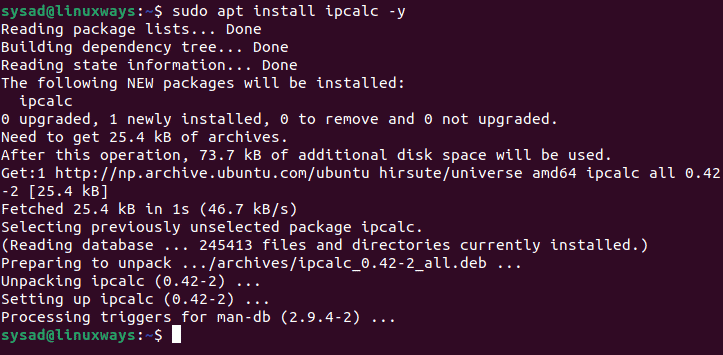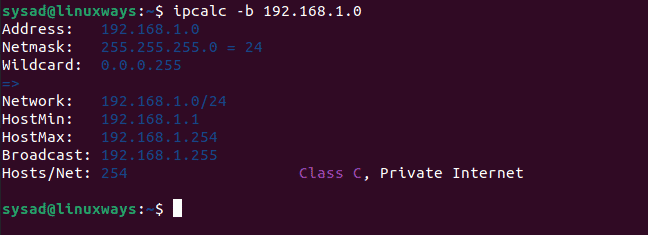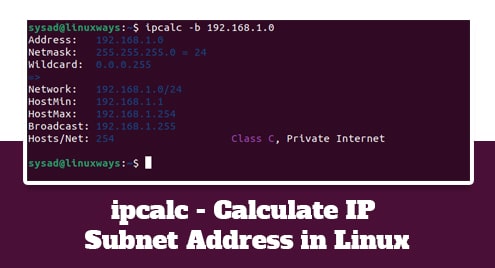In advance or modern networking, you must have knowledge or deal with subnetting. Few of the system administrators or related people can do binary math in their head to calculate the exact subnet mask but some of them need help which is fulfilled by the ipcalc tool in Linux.
In Linux, ipcalc has more abilities in the networking field. Firstly, it collects the data such as IP address and netmask then comes up with the resulting broadcast, network, Cisco wildcard mask, and host range. Also, you can create the subnets and supernets by providing the second netmask. It can be used as the teaching tool by presenting the subnetting results in an easy to understand binary values.
Ipcalc features
- Multiple types of bitmaps as output.
- Address information is retrieved from interfaces.
- Show hostnames directed as per DNS resolutions.
- Output is presented as compressed and standard wise.
- Input address is also presented as compressed and standard wise.
- Output formats as multiple addresses and netmask.
- User defined number of extra networks as Output.
- Output of standard IPV6 network.
How to install ipcalc in Linux
Here, we are going to install ipcalc on Ubuntu 21.04. First open the terminal then run the following command to install the ipcalc tool.
$ sudo apt install ipcalc -y

How to use ipcalc in Linux
Now, you can run ipcalc command with your ip address to see all information about the network addresses.
$ ipcalc 192.168.1.67
Output:

How to calculate the subnet
To calculate the subnet for 192.168.1.0/24, you can run the following command:
$ ipcalc 192.168.1.0/24
Output:

How to calculate a single subnet with 7 hosts
To calculate a single subnet, you can run the following command:
$ ipcalc 192.168.1.0 -s 7
Output:

How to suppress the binary output
To suppress the binary output, you can run the following command by using -b option as shown below:
$ ipcalc -b 192.168.1.0
Output:

How to calculate a multiple subnets with single command
If you want to split 192.168.1.0 into three subnets and total hosts are 50. You have to specify the number of hosts and network mast in each segment.
$ ipcalc 192.168.1.0 -s 10 20 20
Output:

To get more details on ipcalc, you can just run the following command:
$ ipcalc --help
Or,
$ man ipcalc
Conclusion
In this article, you learned about the ipcalc tool and the steps to use it with certain examples. It is an important tool for network related tasks. Thank you!




